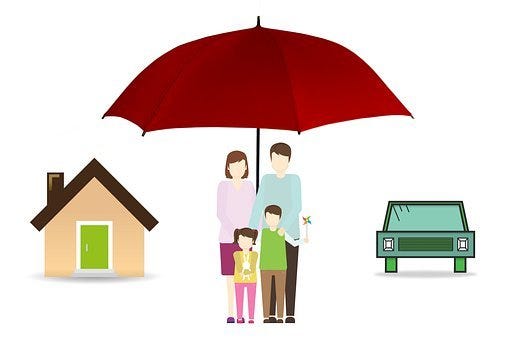It’s a muggy Sunday afternoon. I’m dragged down by my overly heavy rain jacket as I slog down a main road in London, delivering leaflets for an upcoming by-election. Treading down a flight to a basement flat I’m caught off guard by a homeowner, a small bespectacled white man with greying hair and a well-pressed shirt, lurking behind his door, seemingly lying in wait. Quick as a flash he strikes: “What do you think of LTNs?!”. I – ever the fool, ever primed for a political debate – bite the bait: “I support them,” I say.
I don’t remember the details of what follows. Only that it involves a rash of statistics and accusations. How unbearably unfair it all is. Something about saving the children. The red around the man’s collar creeps up to his face. He leans closer to me and brings his face within inches of mine. I’m “useless”, he declares. “Just like the rest of them”. “Immoral.”
After muttering a few words I back up the stairs, make my escape. But I carry the soggy feeling of this barrage on my shoulders, adding to the weight of my oversized coat, for the rest of the afternoon. The rant was physical, and so is my response to it.
But what was all this hot air about?
Low Traffic Neighbourhoods (LTNs) are areas of a city where residential streets are blocked to through traffic. They’re designed to prevent vehicles from using these roads as short cuts and to encourage local people who can to make short journeys around town by foot, bike or public transport instead of by car, promoting safety for pedestrians and cyclists, and lowering pollution levels.
LTNs have been around for a long time in some places, but they’ve become a flash point for debate in the past couple of years since a number of new ones were introduced around London and other parts of the UK during the Covid-19 pandemic.
When I first saw the oversized flowerpots with traffic cameras sprout up at the ends of my road I barely took notice. I don’t own a car, so though I do sometimes get lifts from friends and take cab rides, my daily life wasn’t significantly affected. I’m also not someone who’s ever taken a great interest in transport policy. I know it’s important, but it’s never been the focus of my political activism.
What caught my attention was the intensity of reactions to LTNs. So, I set about on a small experiment, determined to read up on the well-thought-out arguments for and against.
That turned out to be easier said than done. While there are lots of studies explaining the rationales for and providing evidence of the benefits of LTNS, I struggled to find similar well made arguments against them. Rants and hyperbole seem to be the anti-LTNers’ preferred method of communication, whether online or behind the wheel. Facts stacked against them, the antis have turned to moral arguments, presenting themselves as the saviours of the vulnerable (children, people with disabilities, poor people), making dubious claims about speaking for the voiceless.
And as a last resort, they have turned their battle into a culture war: LTNs are anti-democratic, a fundamental threat to our basic freedoms, a sign of encroaching authoritarianism.
When the exhaust from these fanatical fossil-fuelled claims clears, little remains but the obvious: individual car owners want to be able to drive when and wherever they want, willy-nilly the impact on everyone else.
My little experiment was short, but it didn’t lead me to a dead end. All this talk about LTNs and their threat to our basic way of life has got this pedestrian-cyclist thinking seriously for the first time about just how much cars dominate my cityscape. I’m not talking about vehicles used for work, including ambulances and fire trucks, or buses or taxis. I’m talking about privately-owned vehicles used for the convenience or leisure of their owners, families and select inner circle.
I grew up in the late twentieth century, an era of steadily increasing motor vehicle traffic. Though I’ve never owned a car, I’ve been socialised into accepting that a minority of my neighbours and fellow citizens have the right to take up much more physical space than I do. In my part of London, various sources put the level of car ownership at about one third of households. If the cars in my area behave like cars elsewhere, each one spends an average of 95% of its lifetime parked.
When I read this last stat the number lodged itself inside me. The next time I walked around my neighbourhood I eyed those stationary machines closely. I began to realise how my own body, my entire existence, has been shaped by rows of parked cars, which have become part of my natural environment. Suddenly these oversized chunks of metal felt like space invaders. I tried to picture what the streets would look like with, say, one tenth of the number of the cars: those used by people with limited mobility, or shared collectively. What would we do with all this extra space? How many vegetable patches, spaces to sit and play for people without private gardens? How many more street parties?
I also thought about my I hadn’t thought about this all more before. Anecdotally, a lot of anger over LTNs comes from middle-aged men. My own in-person experience of the anti-LTN rant, in which a man I had never met before felt entitled to scream at me at the top of his lungs and blame me for all the world’s woes, was a example of what Laura Bates has called “everyday sexism”. When I referred to LTNs as a magnet for the “angry male mob” in defence of a female councillor who tweeted about being treated to a similar onslaught, I got a pile on from some male cyclists who were indignant that I would suggest that rage over traffic is a feminist issue.
That in turn got me wondering about why there isn’t more written about the gender politics of driving and car ownership, and how they relate to other power relations. We all know about the traffic in women, but what about women in traffic? Some recent research asks why crash test dummies are based on male anatomy. Then there’s the question of why cars are called “she”. In the first post of this newsletter I even wrote inadvertently about the sexism rife in car advertising. There is some academic writing on gender and transportation generally, the gendering of urban space, etc. And there’s an abundance of feminist critique of the privatisation of domestic and public space. But what about the privatisation of transportation?
Maybe the nuclear family car is middle-class feminism’s dirty little secret.
In the end, my little experiment in reading the enemy taught me a few things. But more importantly it sparked my imagination. An unexpected exchange on an anonymous doorstep turned this passive pedestrian into a futuristic eco-warrior, stalking my local area, small dog in tow, writing feminist sci-fi novels in my head and plotting the immanent take-over of my neighbourhood by guerrilla gardeners and diy sound systems. We’ll keep a few old parked cars around – like the scene out of Fame, they can be our dance floor.








